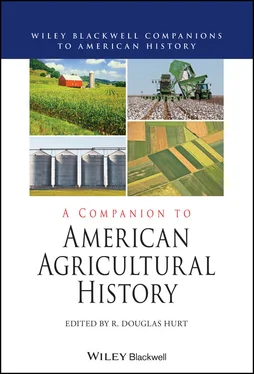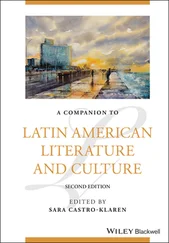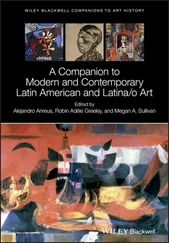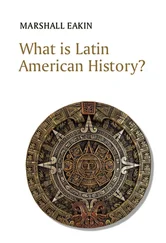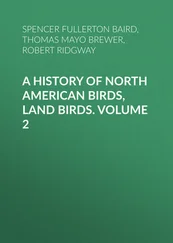The metis the original Americans developed around the production of corn, both in creating its various cultigens as well as in its cultivation, harvesting, and storage, evolved over thousands of years. Historian Roxanne Dunbar-Ortiz argues that corn’s ancient lineage, as well as the fact that it requires careful cultivation, demonstrates that the Americas were an “old” not a “new” world. Three of the world’s seven so-called birthplaces of agriculture were American. One was in the eastern woodlands of North America. Agriculture is ancient on the continent, a fact many colonizers apparently could not apprehend or chose to ignore as they made arguments about why they should take possession of “the wild common of nature.” Historian Cynthia Radding echoes Dunbar-Ortiz by pointing out that maize constituted just one of a wide and delicious array of distinctive American crops developed by indigenous agriculturalists. Besides the Three Sisters triplex of corn, beans, and squash, Amerindian cultigens included amaranths, cotton, tomatoes, chilies, and chocolate. They also perfected “many different species of agaves, nopales, pitahayas, and other xerophytic plants, as well as quinoa and potatoes [in the] Andes” (Smith 2011; Dunbar-Ortiz 2014; Radding 2015). Henequen and sisal were two of these drought-tolerant cultivars, which Mayan Peoples grew and experimented with, developing a “rasping” technique to extract these plants’ strong fibers, ideal for cordage used in a myriad of useful products such as rope, hammocks, sandals, and eventually the McCormick reaper (Evans 2007). Po’pay, the Ohkay Owingeh shaman and warrior, a name which means “ripe squash” in Tewa, deployed such knotted maguey ropes as an early form of information technology, in order to coordinate the uprising of Puebloan Peoples in the Upper Rio Grande Valley in 1680, resulting in a thirteen-year land reclamation from the Spanish (Roberts 2004).
Acknowledging the high-level of indigenous agricultural self-sufficiency before colonization helps us understand the extreme destabilization caused by Europeans and explains how and why Europeans sought to expropriate the mtis of the colonized. Indigenous agriculturalists wrought such technologies over generations of trial and error, and in all regions and subregions of North America. Their agricultural practices were adapted to specific locales, climates, and soil types, and flourished even in some of the harshest continental locations, such as the Great Plains (Hurt 1987). The fruits of this experimentation were what colonizers coveted, because their assumptions about climate, their cultivars, and many of their methods did not work with the cultigens developed by Indigenous Peoples. This was something the settlers at Jamestown learned quickly. After they had exhausted all efforts, even going so far as committing horrifying acts of violence to acquire corn from local Algonquians, they adapted their agriculture to the climate and soil, and learned how to plant and raise corn. Nevertheless, they either could not or would not learn from indigenous agriculturalists about their methods and techniques, and so soil erosion, depletion, and the search for fertilizers ensued (Kupperman 1982; Cushman 2013).
In the upper reaches of the Spanish Empire, in what is today the Southwestern US, awidespread forced knowledge transfer was the extensive and highly adapted water technologies, which Native Peoples had developed. Gravity canals were abundant at the time of colonization, which enabled the relocation and conservation of water. These acequias , often credited to the Spanish, and which are still commonly used today in New Mexico, were actually an indigenous technology. Indigenous groups in the region also employed terracing and check dams to control water (Doolittle 1992). The nature of Spanish colonization, which expropriated land with the people who lived on it, meant that they adopted nearly wholescale indigenous agricultural technologies. In Mexico, Spaniards were able to make into reality their visions for large-scale irrigation projects by using existing indigenous technical and mechanical knowledge (Candiani 2014; Norton 2017). Stuart Schwartz explains how coastal Indigenes utilized a variety of techniques to manage and remedy the annual cycles of the Caribbean hurricane season (Schwartz 2016). Extracting the knowledge and experience of those who were colonized was fundamental to the survival of colonizers and the continued viability of their projects of colonization.
This truism of colonial American agricultural history was never as true as with the cultivation of rice. In the millennium before the African slave trade, people living in coastal Guinea’s Rio Nunez region made “key innovations in their rice farming and land-use strategies,” according to historian Edda L. Fields-Black. The knowledge of rice cultivation, which historian Judith Carney labels an “indigenous knowledge system,” was the knowledge of both how to grow the plant but also where it would grow (Carney 2001). Rice requires a distinctive balance between saline and alkali water, and aridity. Rice and the knowledge for growing it transplanted to the coastal regions in the Americas, where slaves in Georgia and South Carolina cultivated rice for their own use in small plots provided to supplement their nutrition. Planters recognized the potential value of this knowledge, and over time grew to understand that particular Africans knew how to grow this lucrative crop. Linguistic analysis and economic data confirms that a vast majority of slaves transported to rice-growing regions of North America came from the same regions in Africa (Fields-Black 2008).
Eventually, as with other forced knowledge transfers, white planters erased the African indigenous origins of their knowledge and instead emphasized their ability to manage large hydraulic systems for growing rice in economies of scale. Nevertheless, the story of the transference of rice mētis to North America was the story of particular indigenous groups carefully controlling the transmission of knowledge within the parameters of white supremacy. Africans tried to limit the transfer of knowledge to other Africans, who did not know how to cultivate rice, who in turn passed it on in turn to other Africans. The forced knowledge transfer aspect, was that the usage of this knowledge was done within the brutalizing system of chattel slavery and as the means of carving out a more autonomous existence (Carney 2001). In cases when slaves were able to free themselves, their agricultural knowledge became the means of adaptation and survival as studies of maroon communities has demonstrated (J. Carney and Rosomoff 2011; Norton 2017).
Tracing the origins of forced knowledge transfers can be tricky, as with the case of tobacco, which became the basis on which Great Britain built Virginia into a profitable venture. Every history of Jamestown acknowledges that tobacco was an indigenous crop. Yet, tobacco is a finicky plant that requires careful cultivation and very specialized treatment to have value as a drug (Hahn 2011). William Tatham hunted for “the first Knowledge of the Tobacco Plant” in the late eighteenth-century, and had traveled widely in North America. He stated that he could “not recollect one single instance where [he] met with tobacco growing wild … [though he had] found a few spontaneous plants about the arable and trodden grounds of deserted habitations” (Tatham 1800). Tatham credits the Spanish in Florida with the first usage of the plant, which local people had gifted them. The most common first gift of tobacco was when Arawak diplomats met Christopher Columbus in 1492 in the Bahamas. Thomas Harriot, who visited Secoton with John White in 1585, reported that an herb precious to the Algonquian People called uppowoc , was customarily “fowne apart by itfelf” and “the leaves … being dried and brought into powder [the Algonquians] ufe to take the fume or fmoke thereof, by fucking it through pipes made of clay.” In his recent Master’s thesis, Cole Hawkins explores how Haudenosaunee diplomats taught white colonials how to use tobacco and the tobacco pipe effectively in political negotiations (Hawkins 2020). Of significant further importance, it is thought that a slave in Tidewater Virginia perfected the method of “brightening” tobacco, that is curing it in smoke for maximum flavor and potency (Hahn 2011). Thus, it is clear that to Indigenous Americans tobacco was a plant worthy of reverence. Yet, its very uniqueness made it highly unlikely that Algonquians or other Indigenes would have parted with their knowledge of how to cultivate and use it with colonials.
Читать дальше
